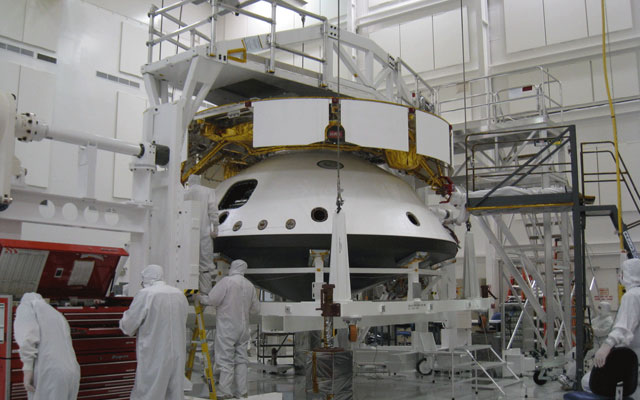
| MISSION | ||||||||||||||
|
Spacecraft
What is the spacecraft? The spacecraft is the protective "spaceship" that enables the precious cargo (that is, the rover!) to travel between Earth and Mars. It is separate from the launch vehicle that carries the spacecraft and the rover outside of Earth's atmosphere and gravity pull. Like NASA's twin Mars rovers that landed on the red planet in early 2004, the Mars Science Laboratory rover was tucked inside a tightly packaged cruise stage and aeroshell with a heat shield. Unlike the two Mars Exploration Rovers, the Mars Science Laboratory Rover extended its wheels similar to the way an airplane unfolds its landing gear just before touchdown. The spacecraft includes the mechanical units that safely carried and maneuvered the rover as it entered the Martian atmosphere and landed on Mars. The spacecraft design for Mars Science Laboratory consists of:
The spacecraft design for the Mars Science Laboratory mission is based largely on the successful twin Viking landers sent to Mars in the 1970s. The rover design is based on the Mars Exploration Rovers, which landed on Mars in early 2004. The system for entry, descent, and landing is entirely new. How much does the spacecraft weigh? The Mars Science Laboratory mission had a total launch mass, including the rockets that lifted it away from Earth, of about 531,000 kilograms (1.17 million pounds). The total mass of the spacecraft is 3,893 kilograms (8,463 pounds). The mass of parts of the spacecraft is as follows:
|

